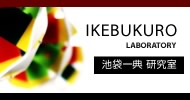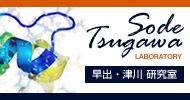Team:Tokyo-NoKoGen/Project/overview
From 2012.igem.org
(Difference between revisions)
| (19 intermediate revisions not shown) | |||
| Line 1: | Line 1: | ||
{{Template:Team:Tokyo-NoKoGen/contents_header}} | {{Template:Team:Tokyo-NoKoGen/contents_header}} | ||
| - | {{Template:Team:Tokyo-NoKoGen/ | + | {{Template:Team:Tokyo-NoKoGen/index_project}} |
<html> | <html> | ||
| - | < | + | <B><font size=28>Coli express</b></font> |
| - | + | <br> | |
| - | + | ||
| - | < | + | |
| - | + | ||
<BR> | <BR> | ||
<BR> | <BR> | ||
| - | < | + | Our concept in constructing a communicating <i>E. coli</i> “Coli Express” was inspired by the “Pony Express”, a rapid mail delivery service in the American Wild West, where mail used to be delivered by horseback riders. The horse carrying the message will pass them on to the next horseback riders, passing on the message like a relay. |
| - | + | ||
| - | + | ||
| - | + | ||
| - | + | ||
| - | + | ||
| - | + | ||
| - | + | ||
| - | + | ||
| - | + | ||
| - | + | ||
<BR> | <BR> | ||
<BR> | <BR> | ||
| - | + | <div align=center><img src="https://static.igem.org/mediawiki/2012/thumb/7/7d/Overview1.jpg/800px-Overview1.jpg" height="70%" width="70%"></div> | |
| - | < | + | |
| - | + | ||
<BR> | <BR> | ||
| + | <div align=center>Fig.1 “Coli express” – “Communicheria coli” relaying message </div> | ||
<BR> | <BR> | ||
| - | |||
| - | |||
| - | |||
| - | |||
<BR> | <BR> | ||
| + | <B>What do we need to make Coli express?</b> | ||
| + | <BR> What we need for making such message relaying system, is the actual “message”, and something to carry and or receive that message. Because we wanted a communication system that can happen within a certain distance, we did not want to use chemical as message to be carried. We have hence decided to use light signals. So, the E. coli will emit light. How about receiving them? It has been known that some halophilic archaea possess light receiving transmembrane proteins called sensory rhodopsin. For transmitting the light signals, we thought it was an interesting idea to connect the sensory rhodopsin together with a two-component system. Fig.2 summarizes the components needed for constructing <i>Communicheria coli</I>. | ||
<BR> | <BR> | ||
| + | <BR> | ||
| + | <div align=center><img src="https://static.igem.org/mediawiki/2012/thumb/9/91/Overview2.jpg/800px-Overview2.jpg" height="70%" width="70%"></div> | ||
| + | <BR> | ||
| + | <div alignt=center>Fig.2 Components we need for constructing <i>Communicheria coli</I></div> | ||
| + | <BR> | ||
| + | <BR> | ||
| + | A culture of <i>E. coli</i> will first respond to light. Let’s say it responds to blue light. The neighboring culture of E. coli will receive that blue light so it will possess a blue light sensor. Then, the <i>E. coli</I> will emit another light of a different wavelength, let’s say green, so that it will not respond to its own color that it emits. Then, the third neighboring culture of <i>E. coli</I> will respond to that green color because it will possess a green light sensor, which will then once again emit another light of a different wavelength, let’s say yellow (Fig.3) | ||
| + | <BR> | ||
| + | <BR> | ||
| + | <div align=center><img src="https://static.igem.org/mediawiki/2012/4/4a/Overview3.jpg" height=70% width=70%></div> | ||
| + | <BR> | ||
| + | <div align=center>Fig.3 A model of how <i>E. coli</i> will emit and receive different light</div> | ||
| + | <BR> | ||
| + | <BR> | ||
| + | As a light emitting device, we have decided to use the lux operon from <i>Photobacterium phosphoreum</i> strain. We have decided to use the lux operon because we do not need to add any substrates, and the luminescence will occur automatically. As a sensory rhodopsin, we have chosen the sensory rhodopsin domain SRII from <i>Natronobacterium pharaonis</I>, fused with the histidine kinase domain of EnvZ, which belongs to the osmoregulatory two-component system EnvZ/OmpR from E. coli (Fig.4). | ||
| + | <BR> | ||
| + | <BR> | ||
| + | <div align=center><img src="https://static.igem.org/mediawiki/2012/thumb/7/7c/Overview4.jpg/800px-Overview4.jpg" height=70% width=70%></div> | ||
| + | <BR> | ||
| + | <div align=center>Fig.4 An overview of how the devices will work inside <i>E. coli</I></div> | ||
| + | |||
| + | |||
| + | |||
| + | |||
| + | |||
| + | |||
| - | |||
| - | |||
| - | |||
</html> | </html> | ||
{{Template:Team:Tokyo-NoKoGen/contents_footer}} | {{Template:Team:Tokyo-NoKoGen/contents_footer}} | ||
Latest revision as of 02:55, 27 September 2012
- overview
- lux operon
- rhodopsin
- modelling
- Future work
- project
Coli express
Our concept in constructing a communicating E. coli “Coli Express” was inspired by the “Pony Express”, a rapid mail delivery service in the American Wild West, where mail used to be delivered by horseback riders. The horse carrying the message will pass them on to the next horseback riders, passing on the message like a relay.

What do we need to make Coli express?
What we need for making such message relaying system, is the actual “message”, and something to carry and or receive that message. Because we wanted a communication system that can happen within a certain distance, we did not want to use chemical as message to be carried. We have hence decided to use light signals. So, the E. coli will emit light. How about receiving them? It has been known that some halophilic archaea possess light receiving transmembrane proteins called sensory rhodopsin. For transmitting the light signals, we thought it was an interesting idea to connect the sensory rhodopsin together with a two-component system. Fig.2 summarizes the components needed for constructing Communicheria coli.

A culture of E. coli will first respond to light. Let’s say it responds to blue light. The neighboring culture of E. coli will receive that blue light so it will possess a blue light sensor. Then, the E. coli will emit another light of a different wavelength, let’s say green, so that it will not respond to its own color that it emits. Then, the third neighboring culture of E. coli will respond to that green color because it will possess a green light sensor, which will then once again emit another light of a different wavelength, let’s say yellow (Fig.3)

As a light emitting device, we have decided to use the lux operon from Photobacterium phosphoreum strain. We have decided to use the lux operon because we do not need to add any substrates, and the luminescence will occur automatically. As a sensory rhodopsin, we have chosen the sensory rhodopsin domain SRII from Natronobacterium pharaonis, fused with the histidine kinase domain of EnvZ, which belongs to the osmoregulatory two-component system EnvZ/OmpR from E. coli (Fig.4).

Our concept in constructing a communicating E. coli “Coli Express” was inspired by the “Pony Express”, a rapid mail delivery service in the American Wild West, where mail used to be delivered by horseback riders. The horse carrying the message will pass them on to the next horseback riders, passing on the message like a relay.

Fig.1 “Coli express” – “Communicheria coli” relaying message
What do we need to make Coli express?
What we need for making such message relaying system, is the actual “message”, and something to carry and or receive that message. Because we wanted a communication system that can happen within a certain distance, we did not want to use chemical as message to be carried. We have hence decided to use light signals. So, the E. coli will emit light. How about receiving them? It has been known that some halophilic archaea possess light receiving transmembrane proteins called sensory rhodopsin. For transmitting the light signals, we thought it was an interesting idea to connect the sensory rhodopsin together with a two-component system. Fig.2 summarizes the components needed for constructing Communicheria coli.

Fig.2 Components we need for constructing Communicheria coli
A culture of E. coli will first respond to light. Let’s say it responds to blue light. The neighboring culture of E. coli will receive that blue light so it will possess a blue light sensor. Then, the E. coli will emit another light of a different wavelength, let’s say green, so that it will not respond to its own color that it emits. Then, the third neighboring culture of E. coli will respond to that green color because it will possess a green light sensor, which will then once again emit another light of a different wavelength, let’s say yellow (Fig.3)

Fig.3 A model of how E. coli will emit and receive different light
As a light emitting device, we have decided to use the lux operon from Photobacterium phosphoreum strain. We have decided to use the lux operon because we do not need to add any substrates, and the luminescence will occur automatically. As a sensory rhodopsin, we have chosen the sensory rhodopsin domain SRII from Natronobacterium pharaonis, fused with the histidine kinase domain of EnvZ, which belongs to the osmoregulatory two-component system EnvZ/OmpR from E. coli (Fig.4).

Fig.4 An overview of how the devices will work inside E. coli
 "
"





